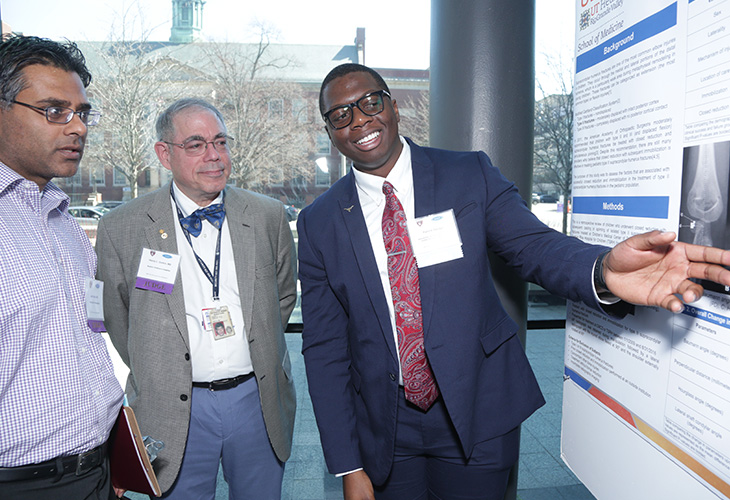Document Type
Article
Publication Date
Winter 11-20-2020
Abstract
Purpose: Indocyanine Green (ICG) near-infrared (NIR) fluorescence angiography is used in assessing testicular perfusion after reduction of testicular torsion to assess tissue viability.
Introduction: Determination of viability of a testicle after reduction of a testicular torsion has been performed by numerous methods including visual assessment, Doppler ultrasound, and cutting the testicular capsule. Each of these has limitations, are not always reproducible, and may involve damage to the testicle and confusion of capsular blood flow for internal perfusion. A possible alternative to these methods is the use of ICG-NIR fluorescence angiography. ICG was FDA-approved in 1959 and has been in use for over 60 years across various fields including colorectal and breast surgery, with few reported adverse events related to the injectable dye. Intraoperative use of an NIR camera causes the dye to fluoresce. ICG -NIR is used in this report to demonstrate the perfusion or lack thereof during reduction of testicular torsion.
Method: Thirty patients in a single center presented with testicular torsion from November 2015 – August 2019, and were evaluated by a combination of 3 Pediatric Surgeons and 2 Pediatric Urologists using ICG-NIR during torsion reduction procedures. An anesthesiologist injected 1.25 mg (/kg) ICG dye intravenously and the surgeon used the NIR camera to visualize the testicle In-situ to assess the local perfusion before and after testicle reduction. After investigation of testicle viability, the surgeon determined whether to proceed with an orchiopexy or orchiectomy based on tissue perfusion.
Results: Thirty patients in a single center presented with testicular torsion from November 2015 – August 2019, and were evaluated by a combination of 3 Pediatric Surgeons and 2 Pediatric Urologists using ICG-NIR during torsion reduction procedures. This process identified the extent of perfusion and differentiated capsular from internal testicular perfusion. It provided assurance of blood flow or definitively confirmed lack of tissue viability, allowing surgeons to proceed with orchiopexies or orchiectomies, respectively. ICG-NIR findings were correlated with standard methods of assessing testicular perfusion, and all patients received contralateral orchiopexy.
Conclusion: In patients presenting with testicular torsion, the determination of testicular viability after reduction is very subjective, and complication risk from the surgery can vary based numerous factors including surgeon level of experience, method utilized to assess perfusion, and hemodynamic status of the patient. Use of technologies that image vascular irrigation prior to decision to resect or leave the testicle in place may help to reduce these complications. This study was limited by small sample size in a single center. Future studies with higher volume should compare postoperative complications using this technology compared to other accepted methods of assessing testicle perfusion. This will help elucidate benefits to current surgical outcomes, as well as to gauge success of future novel techniques used in testicular salvage during torsion reductions.
Recommended Citation
Wayne, C. D., Emran, M. A., Smith-Harrison, L., Stephen Almond, P., & Omar Cruz-Diaz, M. (2020). Intraoperative ICG-NIR Fluorescence Angiography Visualization of Testicular Perfusion in Operations for Testicular Torsion. Journal of the American College of Surgeons, 231(4), e179. https://doi.org/10.1016/j.jamcollsurg.2020.08.473
DOI
10.1016/j.jamcollsurg.2020.08.473
Academic Level
medical student
Mentor/PI Department
Surgery
Poster presentation, as presented at the American College of Surgeons Clinical Congress 2020
Intraoperative ICG-NIR Fluorescence Angiography Visualization of.pdf (24 kB)


